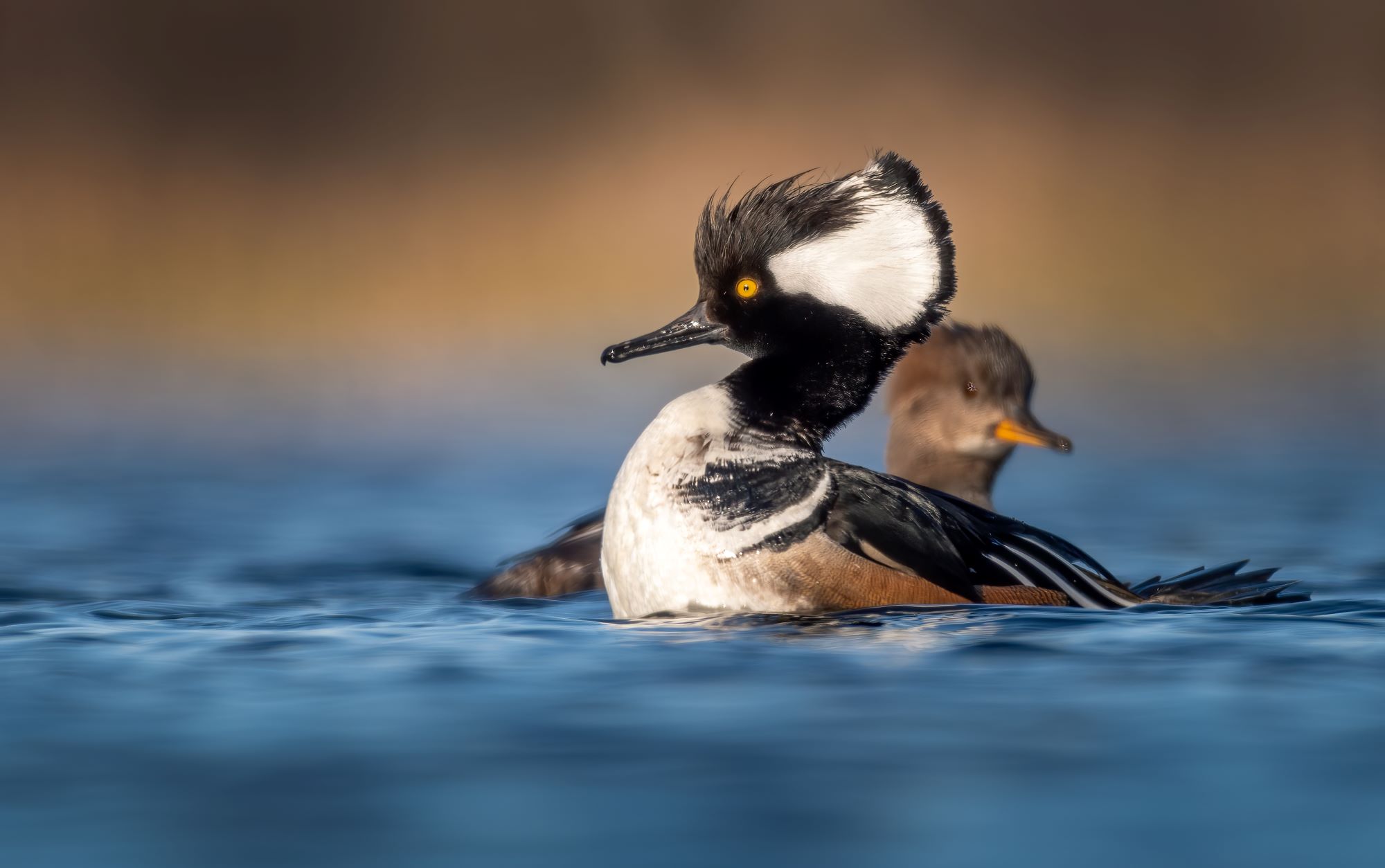
Hooded Mergansers in Utah
Hooded Mergansers, a striking species of waterfowl, hold a special place in Utah's rich birdlife, particularly in the state's wetlands and waterways. Known scientifically as Lophodytes cucullatus, these small ducks are instantly recognizable by their distinctive crests, which can be expanded or contracted. Male Hooded Mergansers are particularly striking, with bold black and white coloring and a large white crest bordered with black. Females are more subdued in appearance, with tawny brown crests and bodies. In Utah, Hooded Mergansers are typically found in the quieter, more secluded parts of lakes, rivers, and marshes, where they can dive and forage in relative peace.
Hooded Mergansers are adept divers, feeding mainly on fish, crustaceans, and insects found in the water. Their sharply serrated bills are perfectly adapted for catching slippery prey. In Utah, their presence is indicative of healthy aquatic ecosystems, as they rely on clear, unpolluted water with abundant food sources. These ducks are often observed diving gracefully into the water, staying submerged as they hunt for food, and then resurfacing with their catch. This feeding behavior not only showcases their agility and adaptability but also plays a crucial role in controlling fish and insect populations in their habitats.
The breeding habits of Hooded Mergansers in Utah are intriguing. They are cavity nesters, often using holes in trees or nest boxes provided in conservation areas. The female lays a clutch of about 8-12 eggs, which she incubates alone. Interestingly, the ducklings are born precocial, meaning they are relatively mature and mobile shortly after hatching. Within 24 hours of hatching, the ducklings must make the daring leap from their nest to the ground or water below, where their mother calls to them. They are excellent swimmers right from the start and quickly learn to forage under their mother’s guidance.
Conservation efforts are crucial for maintaining healthy populations of Hooded Mergansers in Utah. These ducks are sensitive to changes in their environment, particularly habitat loss and water pollution. Conservation initiatives focused on protecting wetland habitats and ensuring clean waterways are essential. This not only benefits Hooded Mergansers but also a host of other wildlife species that depend on these ecosystems. In Utah, efforts by wildlife management and conservation organizations to provide nesting boxes have been particularly beneficial in supporting the state’s Hooded Merganser population.
For birdwatchers and nature enthusiasts, the presence of Hooded Mergansers in Utah’s waterways is a delightful sight. Observing these ducks, with their unique appearance and dynamic diving behavior, is a testament to the diversity and vitality of Utah’s natural habitats. Their presence during the winter months, in particular, adds to the seasonal dynamism of the state’s bird populations, making Utah a year-round destination for birding. The Hooded Merganser, with its distinctive features and behaviors, not only adds to the ecological diversity of Utah’s waterways but also enhances the natural beauty and appeal of these habitats.